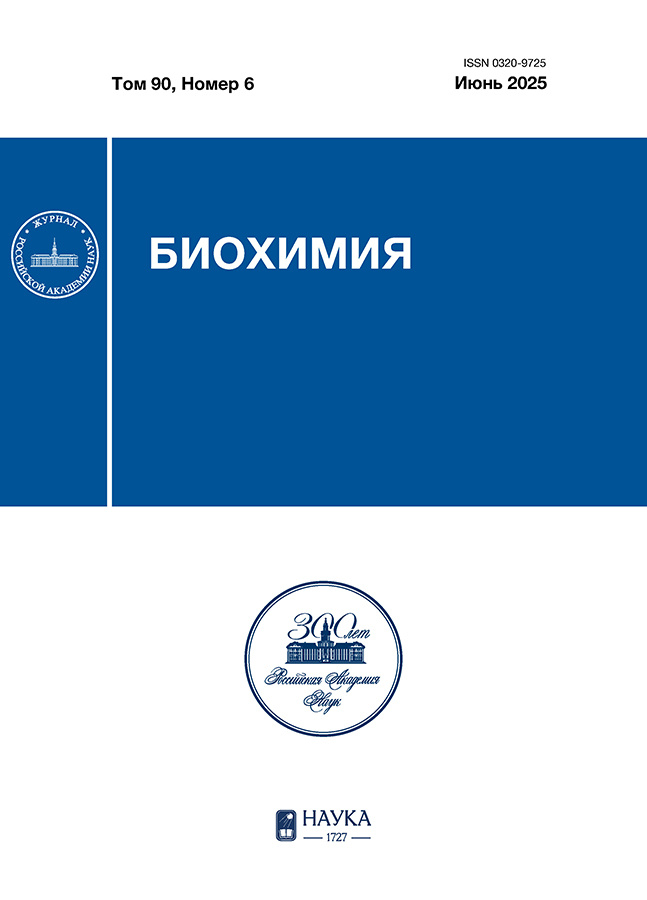(Strept)avidin Binds Glycoconjugates
- Authors: Shilova N.V.1,2, Polyakova S.M.1, Nokel A.Y.1,2, Lipatnikov A.D.1, Gordeeva E.A.1, Lavrentyeva M.V.3, Bovin N.V.1
-
Affiliations:
- Shemyakin-Ovchinnikov Institute of Bioorganic Chemistry of the Russian Academy of Sciences
- Academician Kulakov National Medical Research Center for Obstetrics, Gynecology and Perinatology
- MIREA – Russian Technological University
- Issue: Vol 89, No 11 (2024)
- Pages: 1950-1955
- Section: Regular articles
- URL: https://ter-arkhiv.ru/0320-9725/article/view/681424
- DOI: https://doi.org/10.31857/S0320972524110143
- EDN: https://elibrary.ru/IKGDSV
- ID: 681424
Cite item
Abstract
Fluorescently labeled and conjugated (strept)avidin is widely used for imaging of biotinylated molecules in immunological assays and histochemistry. The presented article shows that in addition to biotin, these proteins bind a number of glycans, including fragments of glycoprotein and glycolipid chains of mammals, in particular, antigens of the ABO blood system, oligolactosamines, 6-O-sulfated oligosaccharides. This interaction is inhibited in a dose-dependent manner by glycans in a form of polymeric (but not monomeric) conjugates at the micromolar concentration level, i.e. requires polyvalence. Taking into account the cluster organization of cell glycans (glycoproteins and glycolipids), when analyzing objects containing carbohydrates, this property is a potential source of error, that can be prevented by avoiding a large excess of (strept)avidin in the analytical system.
Keywords
Full Text
About the authors
N. V. Shilova
Shemyakin-Ovchinnikov Institute of Bioorganic Chemistry of the Russian Academy of Sciences; Academician Kulakov National Medical Research Center for Obstetrics, Gynecology and Perinatology
Author for correspondence.
Email: pumatnv@gmail.com
Russian Federation, 117997, Moscow; 117997, Moscow
S. M. Polyakova
Shemyakin-Ovchinnikov Institute of Bioorganic Chemistry of the Russian Academy of Sciences
Email: pumatnv@gmail.com
Russian Federation, 117997, Moscow
A. Yu. Nokel
Shemyakin-Ovchinnikov Institute of Bioorganic Chemistry of the Russian Academy of Sciences; Academician Kulakov National Medical Research Center for Obstetrics, Gynecology and Perinatology
Email: pumatnv@gmail.com
Russian Federation, 117997, Moscow; 117997, Moscow
A. D. Lipatnikov
Shemyakin-Ovchinnikov Institute of Bioorganic Chemistry of the Russian Academy of Sciences
Email: pumatnv@gmail.com
Russian Federation, 117997, Moscow
E. A. Gordeeva
Shemyakin-Ovchinnikov Institute of Bioorganic Chemistry of the Russian Academy of Sciences
Email: pumatnv@gmail.com
Russian Federation, 117997, Moscow
M. V. Lavrentyeva
MIREA – Russian Technological University
Email: pumatnv@gmail.com
Russian Federation, 119571, Moscow
N. V. Bovin
Shemyakin-Ovchinnikov Institute of Bioorganic Chemistry of the Russian Academy of Sciences
Email: pumatnv@gmail.com
Russian Federation, 117997, Moscow
References
- Green, M. N. (1990) Avidin and streptavidin, Methods Enzymol., 184, 51-67, https://doi.org/10.1016/0076-6879(90)84259-J.
- Bing, T., Chang, T., Qi, C., Zhang, N., Liu, X., and Shangguan, D. (2012) Specific interactions between adenosine and streptavidin/avidin, Bioorg. Med. Chem. Lett., 22, 7052-7055, https://doi.org/10.1016/j.bmcl.2012.09.088.
- Caparon, M. H., De Ciechi, P. A., Devine, C. S., Olins, P. O., and Lee, S. C. (1996) Analysis of novel streptavidin-binding peptides, identified using a phage display library, shows that amino acids external to a perfectly conserved consensus sequence and to the presented peptides contribute to binding, Mol. Divers., 1, 241-246, https://doi.org/10.1007/BF01715528.
- Houen, G., and Hansen, K. (1997) Interference of sugars with the binding of biotin to streptavidin and avidin, J. Immunol. Methods, 210, 115-123, https://doi.org/10.1016/S0022-1759(97)00166-X.
- Smith, J. A., Xu, G., Feng, R., Janetka, J. W., and Moeller, K. D. (2016) C‐glycosides, array‐based addressable libraries, and the versatility of constant current electrochemistry, Electroanalysis, 28, 2808-2817, https://doi.org/10.1002/elan.201600200.
- Ennen, F., Boye, S., Lederer, A., Cernescu, M., Komber, H., Brutschy, B., Voit, B., and Appelhans, D. (2014) Biohybrid structures consisting of biotinylated glycodendrimers and proteins: influence of the biotin ligand’s number and chemical nature on the biotin–avidin conjugation, Polym. Chem., 5, 1323-1339, https://doi.org/10.1039/C3PY01152F.
- Beber, A., Alqabandi, M., Prévost, C., Viars, F., Lévy, D., Bassereau, P., Bertin, A., and Mangenot, S. (2019) Septin‐based readout of PI(4,5)P2 incorporation into membranes of giant unilamellar vesicles, Cytoskeleton, 76, 92-103, https://doi.org/10.1002/cm.21480.
- Obukhova, P., Tsygankova, S., Chinarev, A., Shilova, N., Nokel, A., Kosma, P., and Bovin, N. (2020) Are there specific antibodies against Neu5Gc epitopes in the blood of healthy individuals? Glycobiology, 30, 395-406, https://doi.org/10.1093/glycob/cwz107.
- Ahmad, N., Gabius, H.-J., Kaltner, H., André, S., Kuwabara, I., Liu, F.-T., Oscarson, S., Norberg, T., and Brewer, C. F. (2002) Thermodynamic binding studies of cell surface carbohydrate epitopes to galectins-1, -3, and -7: evidence for differential binding specificities, Canad. J. Chem., 80, 1096-1104, https://doi.org/10.1139/v02-162.
- Shilova, N., Bovin, N., Maltseva, D., Polyakova, S., Sablina, M., Niwa, H., Zakharova, G., Raygorodskaya, M., Bufeeva, L., Belyi, Y., Hushpulian, D., and Tonevitsky, A. (2022) Specificity of viscumin revised. As probed with a printed glycan array, Biochimie, 202, 94-102, https://doi.org/10.1016/j.biochi.2022.08.009.
- Tuzikov, A., Chinarev, A., Shilova, N., Gordeeva, E., Galanina, O., Ovchinnikova, T., Schaefer, M., and Bovin, N. (2021) 40 years of glyco-polyacrylamide in glycobiology, Glycoconj. J., 38, 89-100, https://doi.org/10.1007/s10719-020-09965-5.
- Obukhova, P., Rieben, R., and Bovin, N. (2007) Normal human serum contains high levels of anti-Galα1-4GlcNAc antibodies, Xenotransplantation, 14, 627-635, https://doi.org/10.1111/j.1399-3089.2007.00436.x.
- Duhamel, R. C., and Whitehead, J. S. (1990) Prevention of nonspecific binding of avidin, 201-207, https://doi.org/ 10.1016/0076-6879(90)84275-L.
- Nyhlin, N., El-Salhy, M., Sandström, O., and Suhr, O. (1997) Evaluation of immunohistochemical staining of human duodenal endocrine cells after microwave antigen retrieval, Histochem. J., 29, 177-181, https://doi.org/ 10.1023/a:1026441623791.
- Kim, S. H., Jung, K. C., Shin, Y. K., Lee, K. M., Park, Y. S., Choi, Y. L., Oh, K. I., Kim, M. K., Chung, D. H., Son, H. G., and Park, S. H. (2002) The enhanced reactivity of endogenous biotin-like molecules by antigen retrieval procedures and signal amplification with tyramine, Histochem. J., 34, 97-103, https://doi.org/10.1023/a:1020954611464.
- Shone, C., Ferreira, J., Boyer, A., Cirino, N., Egan, C., Evans, E., Kools, J., and Sharma, S. (2006) The 5th international conference on basic and therapeutic aspects of Botulinum and tetanus neurotoxins. Workshop review: assays and detection, Neurotox. Res., 9, 205-216, https://doi.org/10.1007/BF03033940.
- Dundas, C. M., Demonte, D., and Park, S. (2013) Streptavidin–biotin technology: improvements and innovations in chemical and biological applications, Appl. Microbiol. Biotechnol., 97, 9343-9353, https://doi.org/10.1007/s00253-013-5232-z.
- Jain, A., and Cheng, K. (2017) The principles and applications of avidin-based nanoparticles in drug delivery and diagnosis, J. Controll. Rel., 245, 27-40, https://doi.org/10.1016/j.jconrel.2016.11.016.
Supplementary files














